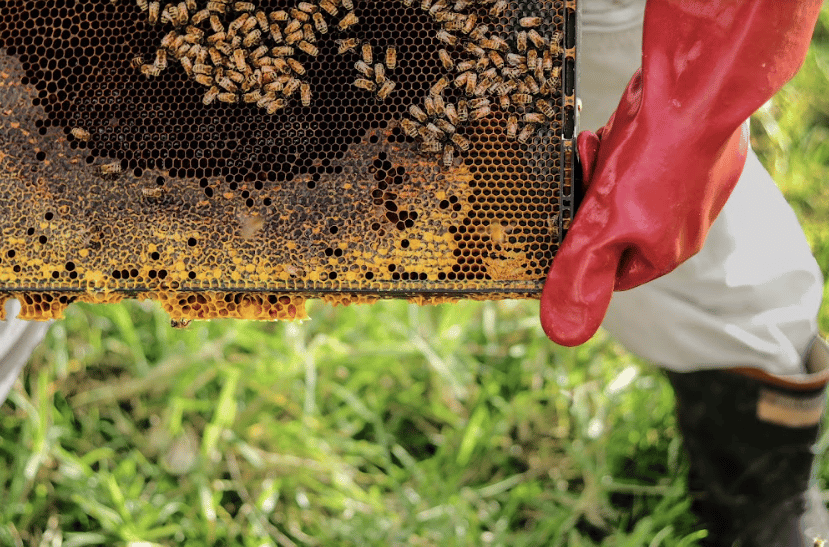To prepare for wintering it is necessary and decisive to carry out meticulously some activities that will allow to “winter” our hive. First we start from a check, the wintering starts in late summer-early autumn and we have to start preparing it already then. It is necessary to observe the possible presence of operculate brood and to evaluate its state of health. Subsequently, the honeycombs left by the colony will be removed, having a crown of honey about four fingers thick at the top but without honey in the central part so that the bees can agglomerate and thermoregulate. Insert a diaphragm for each end of the honeycombs occupied by the bees to reduce heat loss, in this step make sure that the side honeycombs are filled with honey.
Finally, after closing the honeycomb cover, between this and the roof it is good practice to place insulating material such as rags or polystyrene to prevent heat loss. Very harmful are the strong air currents, which hinder the flight, cause and a greater consumption, and, in the long run, irritate the bees causing them to an extraordinary aggressiveness. Therefore, whenever possible, it is recommended to choose locations sheltered from the winds.
Since the honeycombs are no longer occupied by the brood, it is the moment when you can discard the old or bad honeycombs moving them to the sides, or even beyond the diaphragm, scratching with the fork any areas of honeycomb containing operculate honey. we will see the best families occupy still 8-9 honeycombs, the average 6-7 and the weak 4-5. The unoccupied honeycombs must be removed and stored in the warehouse, using melari and nests as containers.
Bees, endowed with a wonderful instinct, during the winter season and they defend themselves from the cold in various ways:
- they tighten the entrance door, close every crack and leave only the openings necessary for the exchange of air ;
- withdraw from the sides towards the center of the nest and from the periphery of the honeycombs still towards the center of these. If the nest and the honeycombs were transparent, we would see the glomer formed by a balloon of bees, dissected by the wax of the honeycombs. Towards the center of the ball rests the queen. The temperature inside the glomere has two phases: when there is no brood it is 28 – 29 degrees C.; when there is brood, it is 32 – 33 degrees. These are not accurate data and may vary by one or two degrees.
Finally, during the winter it is important to abound with supplies, as long as you do not overdo it in order to leave enough space for the brood to be raised in the spring. Normally 15 to 25 kg is a quantity that makes it through the winter (this figure varies depending on the area). Some honeys, however, may not be suitable; chestnut and honeydew, being rich in ash, may clog the bees’ intestines; other late honeys may not have been dehumidified sufficiently by the bees and ferment; finally, some honeys may crystallise, making them difficult to eat. For this reason, beekeepers often support bees with syrups and candies (read our article on how to feed bees in winter to learn more).
